Lance Eliot
Antitrust and Artificial Intelligence (AAI): Antitrust Vigilance Lifecycle and AI Legal Reasoning Autonomy
Dec 23, 2020



Abstract:There is an increasing interest in the entwining of the field of antitrust with the field of Artificial Intelligence (AI), frequently referred to jointly as Antitrust and AI (AAI) in the research literature. This study focuses on the synergies entangling antitrust and AI, doing so to extend the literature by proffering the primary ways that these two fields intersect, consisting of: (1) the application of antitrust to AI, and (2) the application of AI to antitrust. To date, most of the existing research on this intermixing has concentrated on the former, namely the application of antitrust to AI, entailing how the marketplace will be altered by the advent of AI and the potential for adverse antitrust behaviors arising accordingly. Opting to explore more deeply the other side of this coin, this research closely examines the application of AI to antitrust and establishes an antitrust vigilance lifecycle to which AI is predicted to be substantively infused for purposes of enabling and bolstering antitrust detection, enforcement, and post-enforcement monitoring. Furthermore, a gradual and incremental injection of AI into antitrust vigilance is anticipated to occur as significant advances emerge amidst the Levels of Autonomy (LoA) for AI Legal Reasoning (AILR).
Legal Sentiment Analysis and Opinion Mining (LSAOM): Assimilating Advances in Autonomous AI Legal Reasoning
Oct 02, 2020

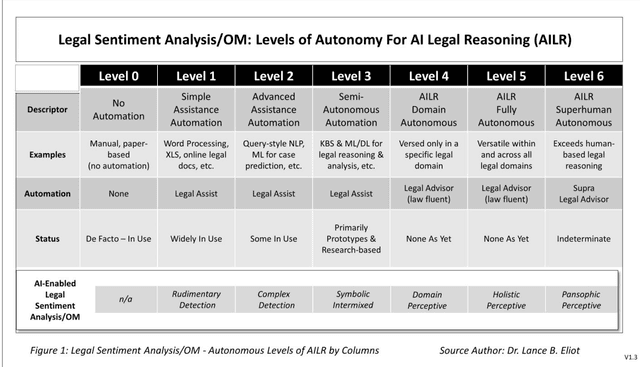
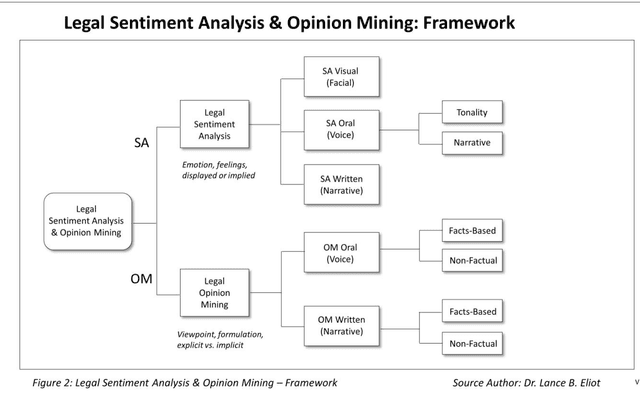
Abstract:An expanding field of substantive interest for the theory of the law and the practice-of-law entails Legal Sentiment Analysis and Opinion Mining (LSAOM), consisting of two often intertwined phenomena and actions underlying legal discussions and narratives: (1) Sentiment Analysis (SA) for the detection of expressed or implied sentiment about a legal matter within the context of a legal milieu, and (2) Opinion Mining (OM) for the identification and illumination of explicit or implicit opinion accompaniments immersed within legal discourse. Efforts to undertake LSAOM have historically been performed by human hand and cognition, and only thinly aided in more recent times by the use of computer-based approaches. Advances in Artificial Intelligence (AI) involving especially Natural Language Processing (NLP) and Machine Learning (ML) are increasingly bolstering how automation can systematically perform either or both of Sentiment Analysis and Opinion Mining, all of which is being inexorably carried over into engagement within a legal context for improving LSAOM capabilities. This research paper examines the evolving infusion of AI into Legal Sentiment Analysis and Opinion Mining and proposes an alignment with the Levels of Autonomy (LoA) of AI Legal Reasoning (AILR), plus provides additional insights regarding AI LSAOM in its mechanizations and potential impact to the study of law and the practicing of law.
Legal Judgment Prediction Amid the Advent of Autonomous AI Legal Reasoning
Sep 29, 2020
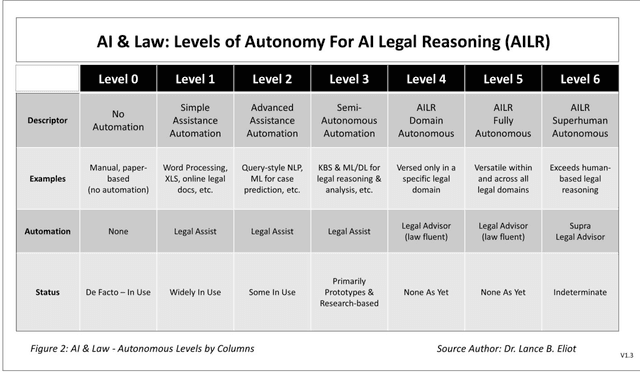

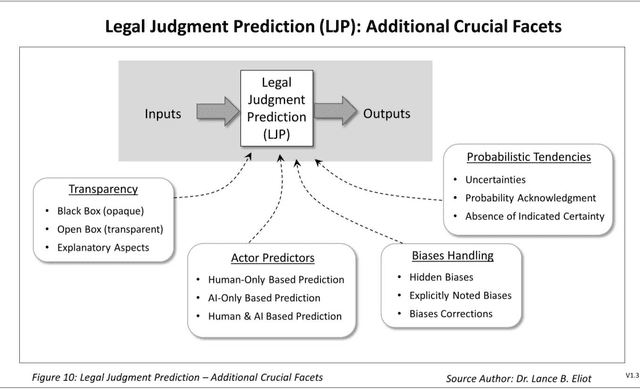
Abstract:Legal Judgment Prediction (LJP) is a longstanding and open topic in the theory and practice-of-law. Predicting the nature and outcomes of judicial matters is abundantly warranted, keenly sought, and vigorously pursued by those within the legal industry and also by society as a whole. The tenuous act of generating judicially laden predictions has been limited in utility and exactitude, requiring further advancement. Various methods and techniques to predict legal cases and judicial actions have emerged over time, especially arising via the advent of computer-based modeling. There has been a wide range of approaches attempted, including simple calculative methods to highly sophisticated and complex statistical models. Artificial Intelligence (AI) based approaches have also been increasingly utilized. In this paper, a review of the literature encompassing Legal Judgment Prediction is undertaken, along with innovatively proposing that the advent of AI Legal Reasoning (AILR) will have a pronounced impact on how LJP is performed and its predictive accuracy. Legal Judgment Prediction is particularly examined using the Levels of Autonomy (LoA) of AI Legal Reasoning, plus, other considerations are explored including LJP probabilistic tendencies, biases handling, actor predictors, transparency, judicial reliance, legal case outcomes, and other crucial elements entailing the overarching legal judicial milieu.
The Next Era of American Law Amid the Advent of Autonomous AI Legal Reasoning
Sep 21, 2020
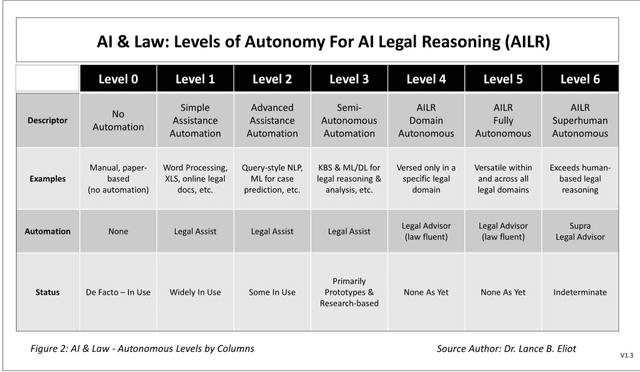

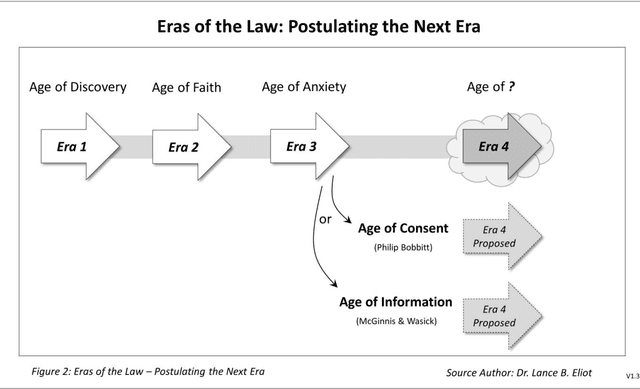
Abstract:Legal scholars have postulated that there have been three eras of American law to-date, consisting in chronological order of the initial Age of Discovery, the Age of Faith, and then the Age of Anxiety. An open question that has received erudite attention in legal studies is what the next era, the fourth era, might consist of, and for which various proposals exist including examples such as the Age of Consent, the Age of Information, etc. There is no consensus in the literature as yet on what the fourth era is, and nor whether the fourth era has already begun or will instead emerge in the future. This paper examines the potential era-elucidating impacts amid the advent of autonomous Artificial Intelligence Legal Reasoning (AILR), entailing whether such AILR will be an element of a fourth era or a driver of a fourth, fifth, or perhaps the sixth era of American law. Also, a set of meta-characteristics about the means of identifying a legal era changeover are introduced, along with an innovative discussion of the role entailing legal formalism versus legal realism in the emergence of the American law eras.
AI and Legal Argumentation: Aligning the Autonomous Levels of AI Legal Reasoning
Sep 11, 2020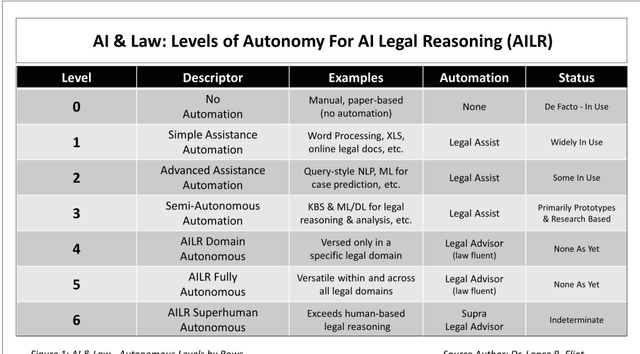
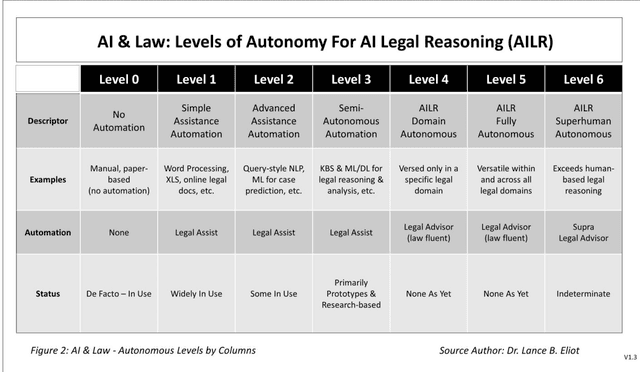
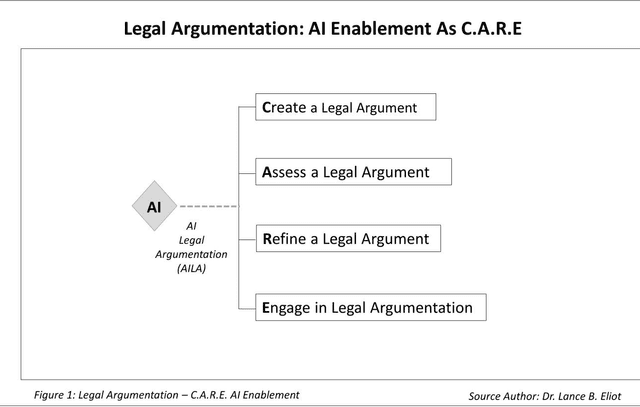

Abstract:Legal argumentation is a vital cornerstone of justice, underpinning an adversarial form of law, and extensive research has attempted to augment or undertake legal argumentation via the use of computer-based automation including Artificial Intelligence (AI). AI advances in Natural Language Processing (NLP) and Machine Learning (ML) have especially furthered the capabilities of leveraging AI for aiding legal professionals, doing so in ways that are modeled here as CARE, namely Crafting, Assessing, Refining, and Engaging in legal argumentation. In addition to AI-enabled legal argumentation serving to augment human-based lawyering, an aspirational goal of this multi-disciplinary field consists of ultimately achieving autonomously effected human-equivalent legal argumentation. As such, an innovative meta-approach is proposed to apply the Levels of Autonomy (LoA) of AI Legal Reasoning (AILR) to the maturation of AI and Legal Argumentation (AILA), proffering a new means of gauging progress in this ever-evolving and rigorously sought domain.
Robustness and Overcoming Brittleness of AI-Enabled Legal Micro-Directives: The Role of Autonomous Levels of AI Legal Reasoning
Aug 31, 2020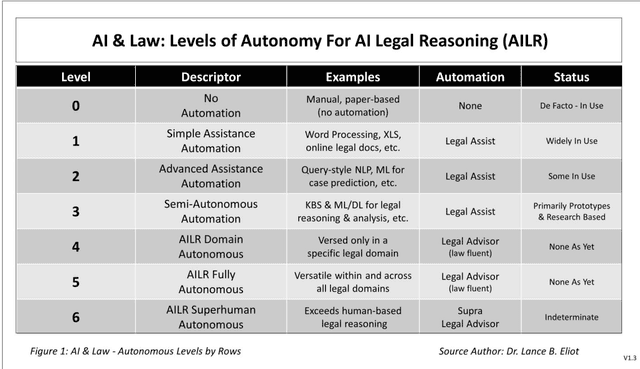
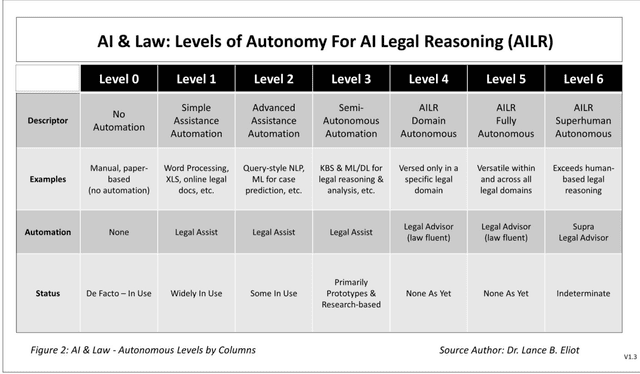


Abstract:Recent research by legal scholars suggests that the law might inevitably be transformed into legal micro-directives consisting of legal rules that are derived from legal standards or that are otherwise produced automatically or via the consequent derivations of legal goals and then propagated via automation for everyday use as readily accessible lawful directives throughout society. This paper examines and extends the legal micro-directives theories in three crucial respects: (1) By indicating that legal micro-directives are likely to be AI-enabled and evolve over time in scope and velocity across the autonomous levels of AI Legal Reasoning, (2) By exploring the trade-offs between legal standards and legal rules as the imprinters of the micro-directives, and (3) By illuminating a set of brittleness exposures that can undermine legal micro-directives and proffering potential mitigating remedies to seek greater robustness in the instantiation and promulgation of such AI-powered lawful directives.
Authorized and Unauthorized Practices of Law: The Role of Autonomous Levels of AI Legal Reasoning
Aug 19, 2020
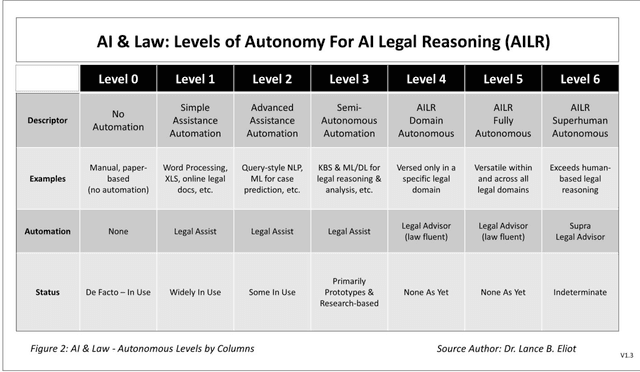
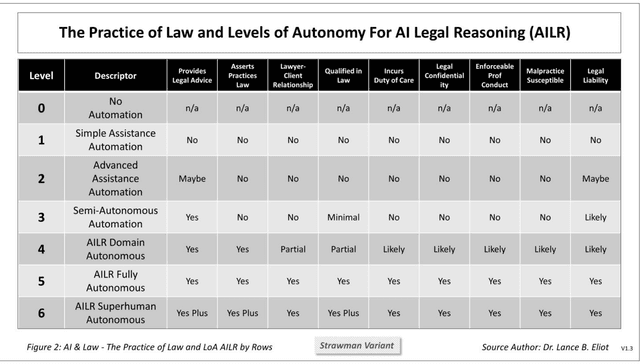
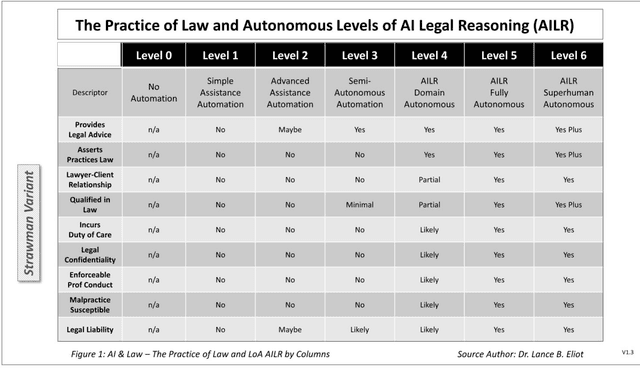
Abstract:Advances in Artificial Intelligence (AI) and Machine Learning (ML) that are being applied to legal efforts have raised controversial questions about the existent restrictions imposed on the practice-of-law. Generally, the legal field has sought to define Authorized Practices of Law (APL) versus Unauthorized Practices of Law (UPL), though the boundaries are at times amorphous and some contend capricious and self-serving, rather than being devised holistically for the benefit of society all told. A missing ingredient in these arguments is the realization that impending legal profession disruptions due to AI can be more robustly discerned by examining the matter through the lens of a framework utilizing the autonomous levels of AI Legal Reasoning (AILR). This paper explores a newly derived instrumental grid depicting the key characteristics underlying APL and UPL as they apply to the AILR autonomous levels and offers key insights for the furtherance of these crucial practice-of-law debates.
An Ontological AI-and-Law Framework for the Autonomous Levels of AI Legal Reasoning
Aug 04, 2020Abstract:A framework is proposed that seeks to identify and establish a set of robust autonomous levels articulating the realm of Artificial Intelligence and Legal Reasoning (AILR). Doing so provides a sound and parsimonious basis for being able to assess progress in the application of AI to the law, and can be utilized by scholars in academic pursuits of AI legal reasoning, along with being used by law practitioners and legal professionals in gauging how advances in AI are aiding the practice of law and the realization of aspirational versus achieved results. A set of seven levels of autonomy for AI and Legal Reasoning are meticulously proffered and mindfully discussed.
 Add to Chrome
Add to Chrome Add to Firefox
Add to Firefox Add to Edge
Add to Edge